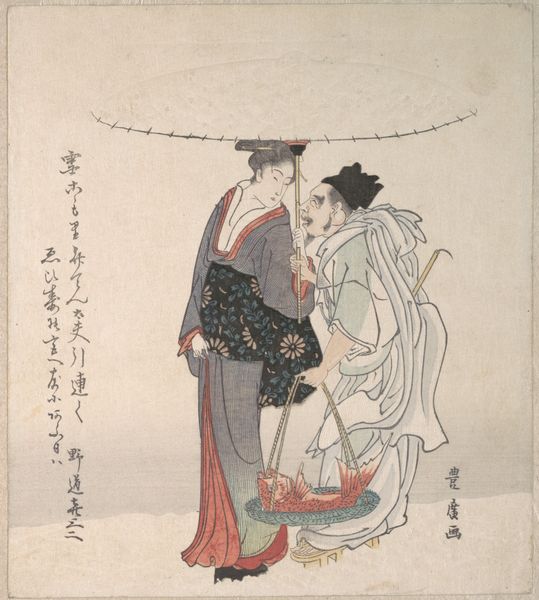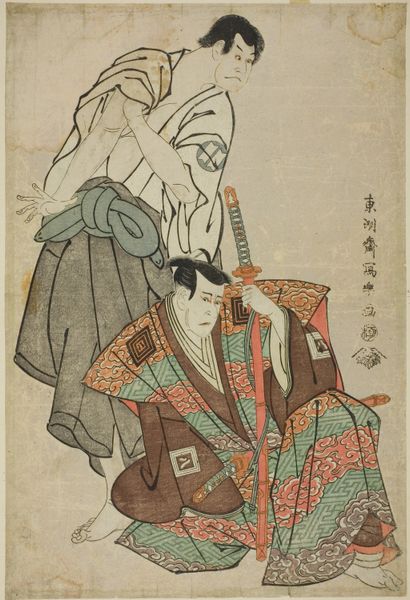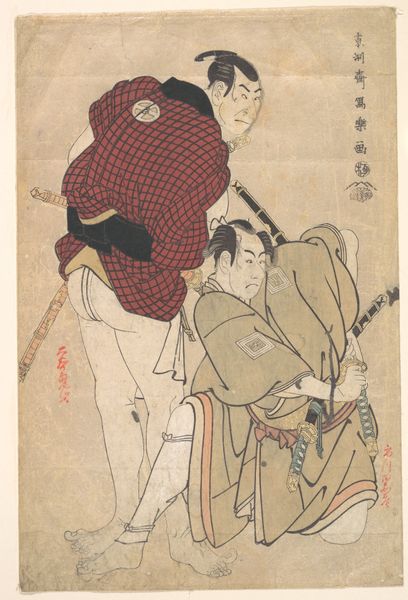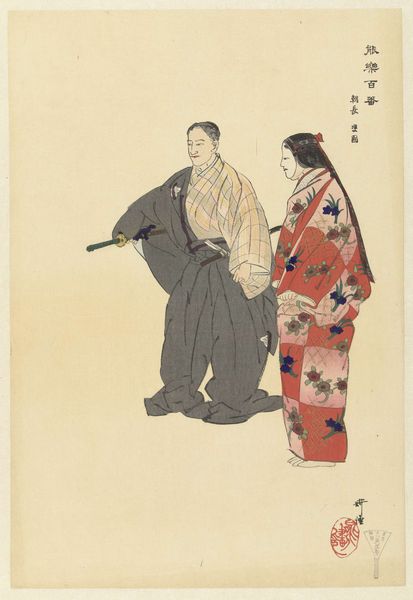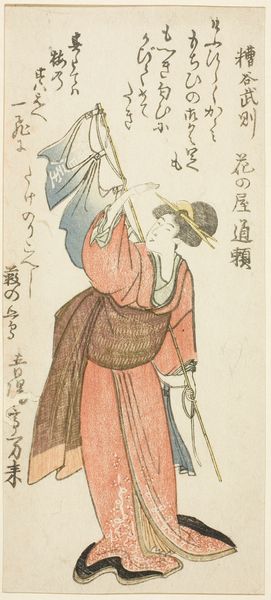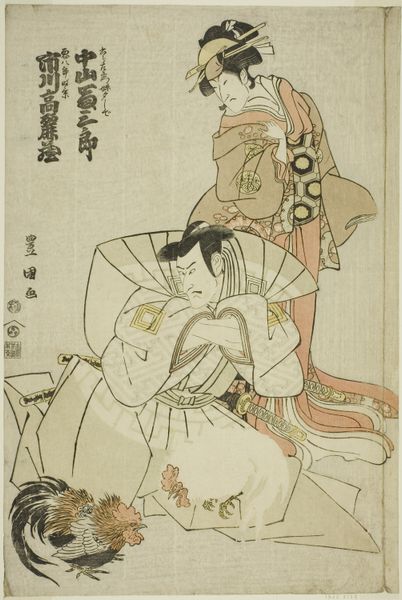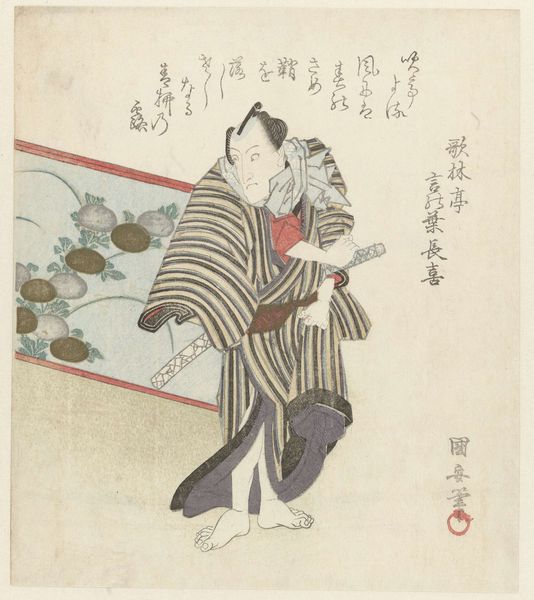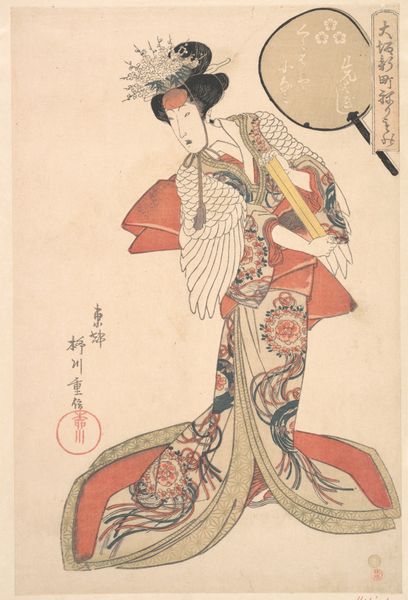
Dimensions: height 210 mm, width 185 mm
Copyright: Rijks Museum: Open Domain
This woodblock print of Ebisu and a woman was created by Utagawa Toyohiro in Japan. It's a great example of *ukiyo-e*, or "pictures of the floating world.” Woodblock prints like this were made through a collaborative process. First, the artist would create a design. Then, skilled wood carvers transferred the image onto separate blocks, one for each color. Finally, printers applied these blocks to paper, layering the colors to build up the final image. This division of labor allowed for mass production, making art accessible to a wider audience. But it also meant that the artist's hand was mediated through the skills of other artisans. The flat planes of color, the bold outlines, and the stylized forms are all characteristic of this process. *Ukiyo-e* prints were not just beautiful objects; they were products of a complex system of production, distribution, and consumption that shaped Japanese culture and its global presence. So, the next time you see a woodblock print, remember the many hands that contributed to its creation, and the social context that gave it meaning.
Comments
No comments
Be the first to comment and join the conversation on the ultimate creative platform.
